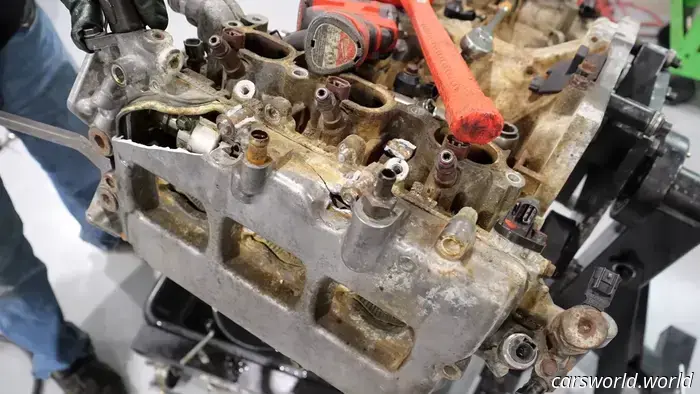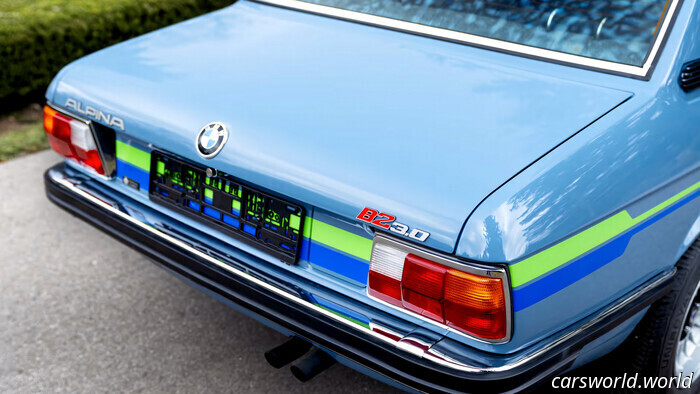
Here’s How Years of Salty Roads Can Affect Your Car’s Engine
I Do Cars on YouTube
Subscribe to The Drive’s daily newsletter
Having spent most of my life in the northeast, I'm all too accustomed to dealing with rusted suspension and subframe bolts. It's not just the undercarriage and body panels that suffer from corrosion; engines can experience significant damage as well, as highlighted in a recent video from I Do Cars. The video features a typically dependable Subaru EZ30R flat-six that, based on my observations, has finally succumbed to years of salt exposure.
It's not surprising when an engine reaches the end of its life after over 200,000 miles. Such mileage can wear down any engine, particularly without proper maintenance. However, the EZ30R H6—commonly found in models like the Outback, Legacy, and Tribeca—is known for its reliability, with the host describing it as "indestructible." Unlike some of Subaru's flat-four engines from that time, the early-to-mid-2000s EZ30R rarely fails internally. The engine’s failure here is likely attributable to an external issue: severe rust.
The engine didn’t fail in a dramatic fashion; there were no issues like blown head gaskets or turbochargers. Instead, it had a broken bell housing bolt and failed a leakdown test, resulting in compression loss in at least one cylinder. To investigate the cause of the failure, they disassembled the engine to its smallest components. However, this proved far more challenging than expected due to the extensive rust, which caused even the bolts within the timing cover to become seized.
I Do Cars
I've never encountered an engine so rusted that even pneumatic impact wrenches couldn’t loosen 8mm valve cover bolts. Some bolts were so stuck that a pneumatic hammer was necessary to free the threaded bolt housings on the valve cover. Even within the timing cover, which is designed to be sealed against water and salt, there was rust present, and the bolts resisted removal.
Despite this, the engine’s internals were in excellent condition. The cylinder liners, piston rings, connecting rods, camshafts, and crankshaft all showed no signs of significant wear. While there was some wear on components like the rod bearings, it was not concerning and certainly didn’t indicate impending engine failure. In fact, the H6’s internal components were in such good shape that a definitive conclusion regarding its failure was elusive.
The only plausible explanation is that rusty valve seats might have contributed to the compression loss. Given the severe corrosion throughout the rest of the engine, this seems quite likely. Regardless, it’s disheartening that something as trivial as rust could terminate the life of an engine that otherwise appears nearly bulletproof—reinforcing my disdain for road salt.



Other articles
 Ford Informs Three Lightning Owners That Their EVs May Be Lacking A Nut Or Two | Carscoops
The nuts in question were taken out during an earlier procedure and may not have been reinstalled or properly tightened.
Ford Informs Three Lightning Owners That Their EVs May Be Lacking A Nut Or Two | Carscoops
The nuts in question were taken out during an earlier procedure and may not have been reinstalled or properly tightened.
 OG Alpina B2 Returns to Show M5 Who Pioneered It First | Carscoops
This is among the rare naturally aspirated Alpina B2s thought to have been manufactured in the 1970s.
OG Alpina B2 Returns to Show M5 Who Pioneered It First | Carscoops
This is among the rare naturally aspirated Alpina B2s thought to have been manufactured in the 1970s.
 His Hyundai Ioniq 5 battery retained 88% capacity even after 360,000 miles | Carscoops
A single Ioniq 5 owner managed to save approximately $21,530 in refueling expenses after covering more than 400,000 miles.
His Hyundai Ioniq 5 battery retained 88% capacity even after 360,000 miles | Carscoops
A single Ioniq 5 owner managed to save approximately $21,530 in refueling expenses after covering more than 400,000 miles.
 Look Away, Mansory is Entering the Real Estate Market | Carscoops
The project will be established in Dubai, highlighting the company's distinctive and striking design.
Look Away, Mansory is Entering the Real Estate Market | Carscoops
The project will be established in Dubai, highlighting the company's distinctive and striking design.
 Finally, a Mansory design that isn't painful to look at.
It's a van.
Finally, a Mansory design that isn't painful to look at.
It's a van.
 Scout's 'Harvester' gasoline-powered EV range extender will be manufactured in Mexico.
According to Scout, a naturally aspirated four-cylinder VW engine will provide the Traveler SUV and Terra pickup truck with a range of 500 miles.
Scout's 'Harvester' gasoline-powered EV range extender will be manufactured in Mexico.
According to Scout, a naturally aspirated four-cylinder VW engine will provide the Traveler SUV and Terra pickup truck with a range of 500 miles.
Here’s How Years of Salty Roads Can Affect Your Car’s Engine
The salt caused such extensive rust on this Subaru engine that an air hammer was required to take off the valve cover bolts.
